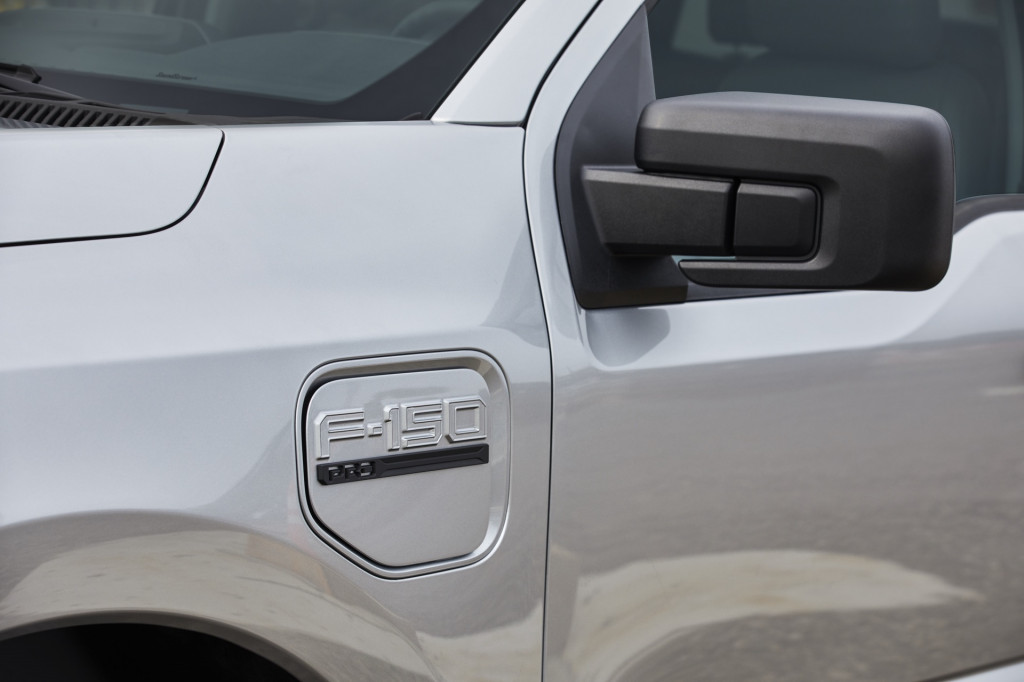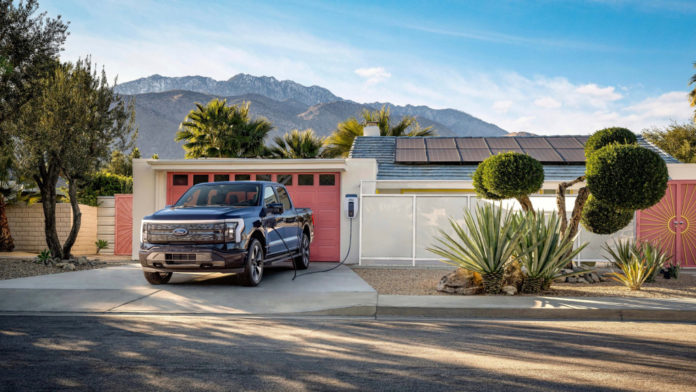While bidirectional charging remains at the hypothetical or developmental stages for some automakers, it’s almost here for Ford and its F-150 Lightning electric pickup truck. A new partnership between Ford and California utility PG&E is aiming to take that functionality to the next stage: the electrical grid.
Ford plans the first installations of its Intelligent Backup Power hardware for the F-150 Lightning this spring. The feature will turn some of the electric trucks into intelligent backup power banks capable of powering the home for up to 10 days.
That will make the Ford electric truck the first EV in the U.S. market capable of such a task, with officially OEM-supported equipment.
Through what the companies call “an early adopter opportunity” in “a small number of customers’ homes” PG&E will explore how that system interconnects with the grid, and how the functionality enabled with bidirectional charging might support resiliency during grid outages.

2022 Ford F-150 Lightning Intelligent Backup Power
The two companies have yet to release details on additional hardware for this study. As it is, the Lightning’s configuration requires an 80-amp Charge Station Pro smart-charger, and it will use a dark-start battery and transfer switch, with a power inverter, for getting power flowing into the home at up to 9.6 kw in the event of a loss of grid power. PG&E also hopes “to learn more about the overall customer experience,” which will inform future collaborations, likely on a larger scale.
Ford’s preferred installer for the hardware is Sunrun, which can potentially install and configure solar at the same time, so it’s likely the actual home configurations will vary greatly among Lightning customers who use the functionality.

2022 Ford F-150 Lightning Pro
Ford may be in the lead here, but it isn’t the only one studying such a possibility, even with this utility. GM and PG&E announced a project earlier in the week that will allow “a small subset” of customers’ homes to receive power from their EV during a power outage. Although that project aims to deploy the associated hardware by this summer, with a wider pilot program later this year, none of it is currently available to customers in the way the Ford system is.
PG&E operates in a space that includes many American EV early adopters. According to it, one in five EVs in the U.S. are on the road within the company’s service area, spanning Northern and Central California. Supporting hardware for bidirectional charging has been a long time coming in the U.S. and requires the support of utilities, so this project could potentially lead to others around the country once the advantages become apparent.
The utility notes that the electricity that fuels California’s EVs is among the cleanest energy mixes in the country, with 93% of its 2021 mix coming from greenhouse-gas-free sources.









